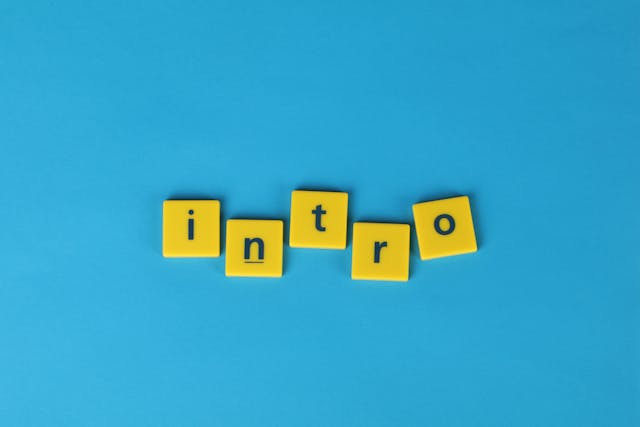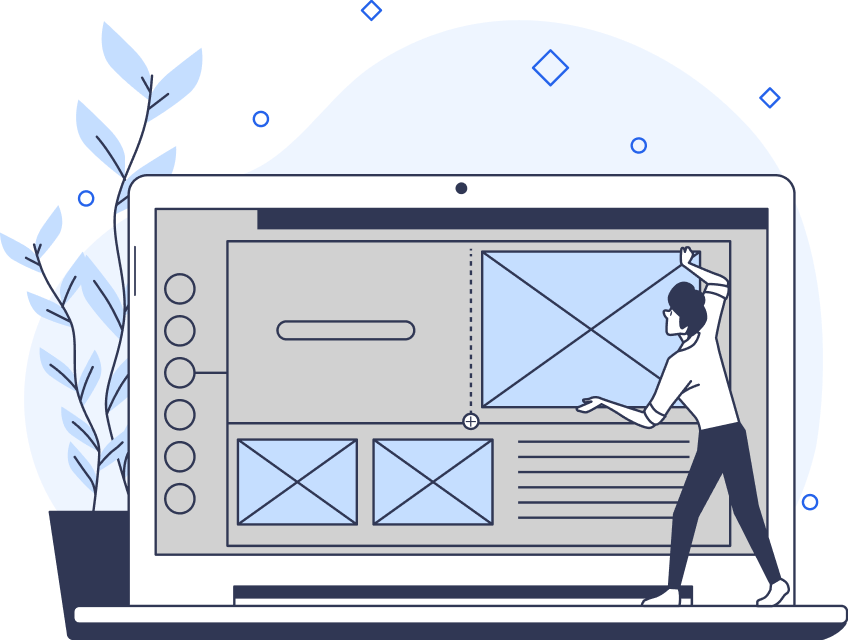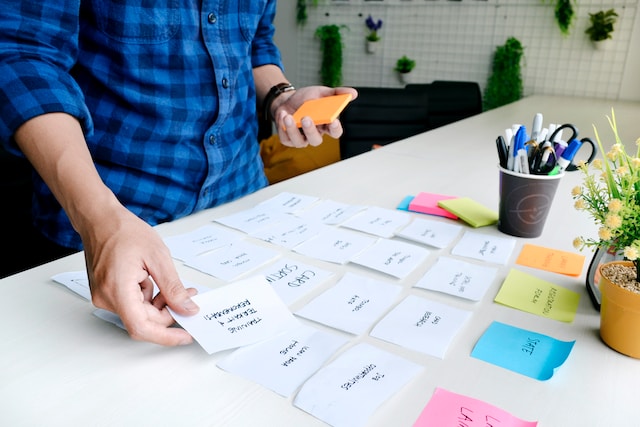The UX design/product development process has a lot of components that you and your team must keep track of. Without centralizing your design decisions, strategies, research methods, data sources, and product iterations, you’d considerably hinder your design process.
Thankfully, with design documentation, you don’t have to worry about complicating the design process unnecessarily.
In today’s guide, we’ll explore what it means to use design documents and why it’s imperative that you do. We’ll also address the best way you can approach creating your own design documents.

What Is a Design Document?
Before you start working on your design document(s), you need to know what one is. Knowing what design documents are means knowing what to include to ensure you stay on track throughout the design process.
So, with that in mind, what is a design document?
A design document covers all of the most crucial aspects of your product’s design. Design documentation enables product/UX designers to document and communicate vital design decisions, strategies, and the reasoning behind them.
Ultimately, a design document will help every member of your team stay on the same page. For that reason, design documents typically include the following components of the design process:
- Information relating to the target audience, such as user personas and user journeys
- Product features
- Implementation details
- Wireframes
- Mockups
- Prototypes
- Components and patterns of design systems/style guides
- Accessibility guidelines
- Project deadlines

Why Is Design Documentation Important?
You should treat design documents as design guidelines that help you and your team understand crucial design decisions. For that reason, design documents are incredibly important.
However, for other reasons that we’ve explored below, design documents are even more important than you may think.
1. The Perfect Reference
Design documents act as a historical reference for user experience design decisions, user research, vital workflows, and experimental iterations.
Design documents don’t just make it easier to make future changes and clarify the data behind your decisions. Design documents also prevent other designers from wasting valuable time experimenting with iterations that you’ve already tried and tested.
2. Onboarding & Handoffs
Cross-functional collaboration is hugely significant to the design process. What’s more, you should expect to work with different team members at different stages of product development.
Put differently, you need a quick way to get new collaborators up to speed on why you’ve made certain decisions.
Design documents will help you achieve that goal when onboarding new team members or handing a product over.
Design documents that especially include implementation details or instructions will simplify everyone’s workflow, resulting in fewer mistakes along the way.
3. Communication & Collaboration
As you know, there is no designer who can overstate the importance of collaboration during the design process.
Everyone needs to access and understand your decisions and the rationale behind them. Design documents act as a singular source of truth for every team and department to learn about a product’s evolution.
More importantly, design documents will reveal the steps that preceded the finalized product. Overall, these documents work tremendously as a way to enhance and streamline communication and collaboration.

Types of Design Documents Every Designer Should Know About
Below, we’ve listed some of the most popular/commonplace types of design documents that designers use.
- Requirements Document: A requirements document includes functional and non-functional requirements of the software. They also often include user stories and use cases. These documents help to clarify the goals, scope, and expectations of the project.
- Architecture Document: An architecture document describes the high-level structure of a software system. They include descriptions of modules, layers, and interfaces. Architecture documents also provide an overview of a software system’s structure, principles, diagrams, and rationale. Ultimately, they help stakeholders understand a software’s system and data flow.
- Source Code Documents: Source code documents help developers understand how a system’s coding works, often by including code snippets.
- User Documents: User documents briefly explain how the product can help solve their problems. For that reason, they often include FAQs, tutorials, instructions, embedded assistance, and support portals. Due to their user-centric helpfulness, user documents help to improve the user’s experience.
- Test Documents: Test documents include test strategies, test plans, test specifications, and test checklists. Ultimately, these documents detail how you’ve validated your product. Test documents are a great way of conducting quality assurance.
How To Write a Design Document: A Simple Guide
Now that you know more about design documents, it’s time to learn how to write a design document. We’ve provided a simple guide that uncovers how you should approach creating your documents.
Please note that these steps can vary slightly depending on your client and industry. Generally, however, you can’t go wrong by following the steps below.
1. Clarify Your Goals
You should clarify the purpose of your design document before you start creating it. By doing so, you’ll have a clear sense of direction that you can always revisit for clarity.
What’s more, clarifying your goals will help you prioritize them and organize your design document in a transparent way.
We recommend writing down all of your goals until you’ve covered every important aspect of your design document.
Always bear in mind that anyone reading your document should understand what you plan to do with your designs.
2. Consider Your Audience
Your design document will allow for seamless project-wide communication and deliberation. For that reason, you should tailor your language and content to your primary audience.
In most cases, you’ll write for those who need to approve or work on the designs you’ve outlined in your document. However, newcomers and clients can also read your design documents, and they may need further explanation to understand your work.
Ultimately, you need to write the right things in the right places with the appropriate amount of detail for your audience.
3. Document the Necessary Information
Now, it’s time to focus on the content of your document. Write down the key points, strategies, decisions, and overall content that you will include in your document.
Use lists to organize the various sections within your document or create a contents table. This will help you organize and include crucial details logically while also allowing for feedback from your team. With your team, you can identify any irrelevant or omitted details.
4. Write Your Introduction
Having outlined your goals, audience, and content, you can begin writing your introduction.
Your introduction should contextualize the design of your product, helping readers understand how each content section relates to one another.
The best introductions summarize the purpose of the document, what it’s about, and how it’s useful.
5. Create Your Document
Using the outlines you created for your goals, content, and your audience’s requirements, you can write your document out entirely.
Tie everything together with cohesion, clarity, and communication in mind. Once you’ve covered all your bases, you can send your document to the appropriate party.
Tip: Many designers detail user stories, project scope, vital metrics that they will track, deliverables, and even a glossary.
A Design Document Format: How To Arrange Your Documentation
You know how to write a design document; now it’s time to learn about how to format your design document.
It’s likely that you’ve conducted research on design documents prior to reading this guide. If so, you know that there isn’t a standardized way to approach your design document format.
However, we recommend arranging your documents in the following order to maximize cohesiveness and clarity.
- Title of your document
- A list of people who will work on this project
- Introduction
- A problem statement, including why the project is necessary and what readers need to know to evaluate the project. We also recommend including details that elucidate how this project fits into the overarching product strategy.
- Your goals
- Your proposed solution, including the design decisions behind your solution
- Alternative solutions
- Your chosen testing methods
- A detailed section on the scope of your project and a strict timeline of deliverables

The Perfect Design Document Template: Finding the Right Template for You
If you find yourself struggling to create a professional, readable design document, don’t worry – there is still hope. Fortunately, there is a wealth of design document templates out there to help you!
Below, we’ve provided a list of some of the best design document templates that you should experiment with.
Document Design Software You Should Try
To help you further, we’ll point you in the right direction when it comes to document design software, too.
Like we did with document design templates, we’ve listed some of the best document design software.
Experiment with some of the software we’ve listed. The right software will allow you to simplify and streamline the creation of even the most complex documents.
Best Practices for Writing Design Documents
Lastly, we’ve arranged some of the best tips and tricks to help you create excellent design documents time after time.
- Don’t make your document too long or complicated.
- Consistently invite feedback and collaboration.
- Use visual aids like charts and diagrams.
- Don’t leave out any crucial details.
- Update your design document when necessary.
- Use plain language.
- Keep sentences and paragraphs short.
- Employ bullet points and number lists for easy scanning.

Design Documents: Final Thoughts
Design documents are great tools that unify your team and help you keep on track during the design process.
Another way to stay on track as you design products is to take inspiration from proven products. In other words, you need a reliable source of cross-industry inspiration like Page Flows.
Page Flows hosts over 5,100 recordings and over 83,000 screenshots of tried and tested products from esteemed brands.
Working alongside the likes of Disney and Google, our expertise allows us to create and record seamless user flows.
We collect emails when we record user flows so you can perfect your users’ journeys and your email marketing campaigns.
Like design documentation, Page Flows knows how to keep you on track as you create successful products.
Get started today to uncover the secret to a compelling, helpful user journey!





